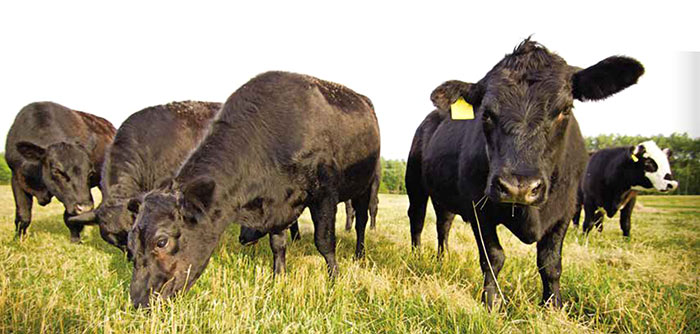One of the key attractions of our Certified Regenerative by AGW program is its practical…

Green Diets
What is a sustainable feeding strategy for cattle?
Like any aspect of sustainable management or production, a sustainable feeding strategy for ruminants such as cattle comprises a number of core principles.
First, a sustainable diet must meet the animals’ nutritional requirements at all stages of their development. It should ensure optimum animal health and high-quality production, rather than solely maximizing production or growth rate.
Second, a sustainable feeding regime should use feeds to formulate diets that meet the proper physiological functioning of the animal at any given stage of its life. For example, the diet of young animals should be based on natural milk, preferably maternal milk, ideally with all calves receiving natural milk for at least three months. For older animals, diets should contain a high proportion of forage from dry matter and at least 70% of the daily dry matter should consist of roughage, fresh or dried fodder, or silage. While feeding purchased concentrates to cattle can increase productivity, research shows that the sustainability of the system is markedly reduced, and health risks are increased. All animals should have free access to fresh, clean water at all times.
A sustainable diet should also meet the animals’ behavioral needs by not only offering natural feeds but using animal-friendly feeding techniques and providing appropriate feeding environments. This should include continuous access to grazing and sufficient and accessible indoor feeding space when animals are housed.
Finally, all feeds should come from a sustainable source; in other words, feed production methods aim to minimize greenhouse gas emissions, do not pollute the environment and contribute positively to the conservation of biodiversity. Ruminants have the ability to convert forages and other feeds that cannot be eaten directly by humans into meat and milk that humans can eat. Any sustainable livestock system must aim to maximize the use of forages and minimize the use of human edible feedstuffs, such as grains and soy. Ideally, forage should come from home-grown sources integrated into the rest of the farm cropping system.
Mineral deficiencies
In most well-managed grazing situations, a largely forage-based diet should be sufficient to meet the nutritional requirements of most ruminants. Sustainably managed, home-produced feeds usually involve practices, such as more sympathetic management of the soil, better biological activity, more balanced crop rotations, less production pressure on livestock enterprises, more diverse swards (with traditional species of grasses and deep-rooting herbs and forbs), and a reduction or prohibition of artificial fertilizer use, which may all help reduce the risk of micro-nutrient deficiencies seen in more intensive production systems.
Nevertheless, it is likely that inherent regional and local soil and forage mineral deficiencies may be enhanced on farms that are attempting to raise animals entirely on home-grown feeds. Working with your vet or qualified advisor, you should take soil, forage or blood tests to identify any likely mineral deficiencies and outline your strategies for dealing with them in your Farm Health Plan.
Feedipedia is an open access information system on animal feed resources that provides information on nature, occurrence, chemical composition, nutritional value and safe use of nearly 1,400 worldwide livestock feeds. Visit feedipedia.org
Article adapted from Farm Health Online. For more information about practical, science-based advice on high-welfare livestock management, visit farmhealthonline.com


